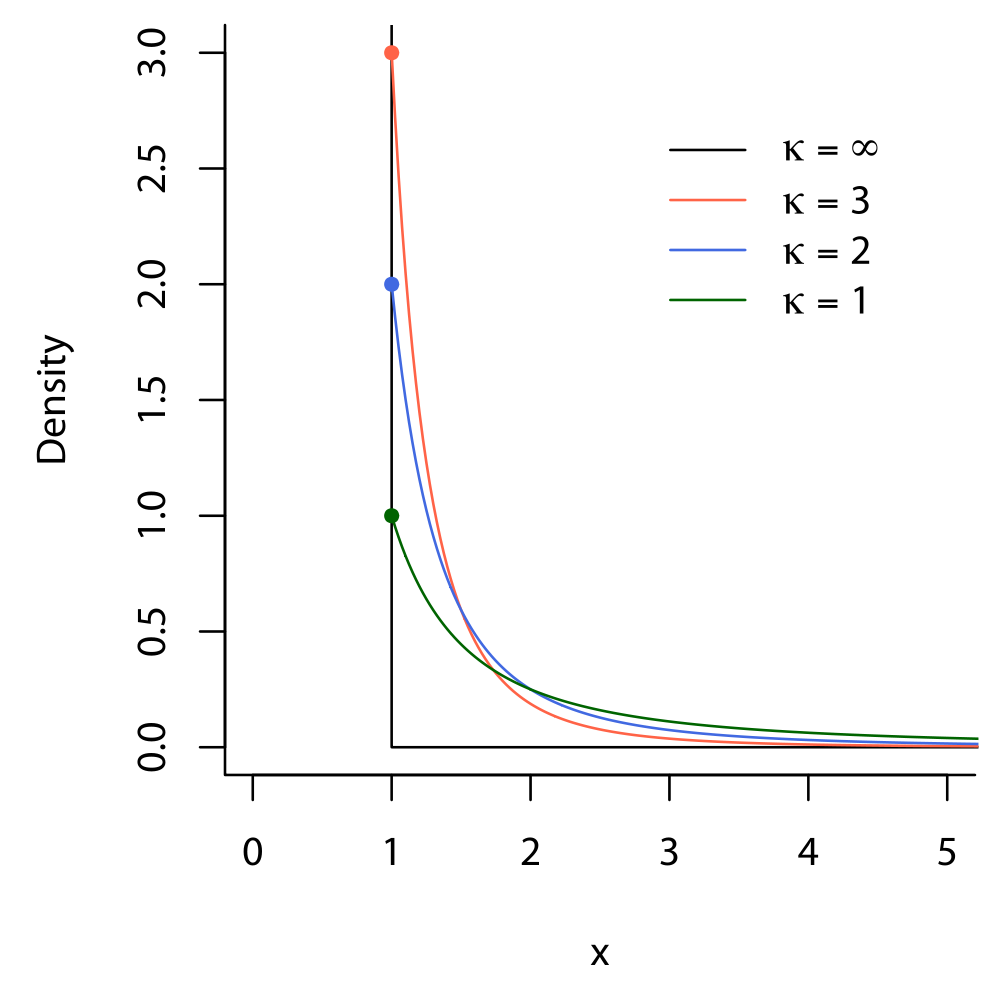Resampling¶
Properties of Estimators¶
We’ve now seen that estimation is not enough.
- We often want to know about properties of estimators.
- For example, what is the standard error of an estimator?
- Remember that before data is observed, an estimator is a random variable itself.
- As an example, \(\bar{Y}\) is a sum of random variables divided by a constant value.
- Before \(\{Y_i\}_{i=1}^n\) is observed, \(\bar{Y}\) is random and has its own variance and standard deviation.
Resampling¶
It is often challenging or impossible to compute certain characteristics of estimators.
- We would like to replace theoretical calculations with Monte Carlo simulation, which draws additional samples from the population.
- Sampling from the true population is typically impossible.
Resampling¶
We substitute sampling from the true population with sampling from the observed sample.
- This is referred to as resampling.
- If the sample is a good representation of the true population, then sampling from the sample should approximate sampling from the population.
Bootstrapping¶
Suppose the original sample has \(n\) data observations.
- Bootstrapping involves drawing \(B\) new samples of size \(n\) from the original sample.
- Each bootstrap sample is done with replacement.
- Otherwise, the bootstrap samples would all be identical to the original sample (why?).
- Drawing with replacement allows each bootstrap observation to be drawn in an \(i.i.d.\) fashion from the sample.
- So, the original sample plays the role of the population.
Bootstrap Estimates¶
Let \(\theta\) be a parameter of interest and let \(\hat{\theta}\) denote an estimate of \(\theta\) using a sample of data, \(\{y_i\}_{i=1}^n\).
- \(\hat{\theta}\) might be calculated by maximum likelihood estimation.
- We could create \(B\) new samples from \(\{y_i\}_{i=1}^n\) by resampling with replacement.
- For each new sample \(j = 1, \ldots, B\), we could compute \(\hat{\theta}^*_j\) in the exact way \(\hat{\theta}\) was computed with \(\{y_i\}_{i=1}^n\).
Bootstrap Estimates¶
- One way to estimate \(E[\hat{\theta}]\) is by averaging the bootstrap estimates:
Estimating Bias¶
True bias for an estimator is defined as
- We can approximate the population average, \(E[\hat{\theta}]\), with a bootstrap average, \(\bar{\hat{\theta}}^*\):
- We replaced the true population value, \(\theta\), with the sample value, \(\hat{\theta}\), since the sample substitutes for the population.
Estimating Standard Error¶
The true standard deviation of \(\hat{\theta}\) can be estimated with the bootstrap estimates:
Example: Pareto Distribution¶
Suppose we have a sample of random variables drawn from a Pareto distribution:
- The density of each \(Y_i\) is
- If \(Y_i \sim \mathcal{P}(\alpha, \beta)\), then \(\alpha > 0\), \(\beta > 0\) and \(Y_i > \alpha\).
- \(\alpha\) is a parameter dictating the minimum possible value of \(Y_i\) and \(\beta\) is a shape parameter.
Example: Pareto Distribution¶
The joint density of \({\bf Y} = (Y_1, \ldots, Y_n)'\) is
Example: Pareto Distribution¶
Assuming \(\alpha\) is known, the log likelihood of \(\beta\) is
Example: Pareto Distribution¶
The MLE, \(\hat{\beta}\) is the value such that
Example: Pareto Distribution¶
The second derivative of the log likelihood is
- The observed Fisher information is
- The asymptotic standard error of \(\hat{\beta}\) is
Example: Pareto Distribution¶
Given a sample of \(n\) observations from a Pareto distribution:
- We can compute the MLE, \(\hat{\beta}\).
- We can compute the asymptotic standard error \(\hat{\beta}/\sqrt{n}\).
Example: Pareto Distribution¶
We can generate \(B\) new samples by resampling.
- For each new sample, we can compute \(\hat{\beta}_j\), \(j=1,\ldots,B\).
- We can compute the standard deviation of \(\{\hat{\beta}_j\}_{j=1}^B\) and compare to the asymptotic standard error.
- The bootstrap standard error will be a better estimate of variation than the asymptotic standard error when \(n\) is small.
Bootstrap Confidence Intervals¶
Given a set of bootstrap estimates, \(\{\hat{\theta}^*_j\}_{j=1}^B\), we can form a \(1-\alpha\) confidence interval with the normal approximation
where \(z_{\alpha/2}\) is the \(\alpha\) -upper quantile of the standard normal distribution.
- Note that the interval is centered around \(\hat{\theta}\) rather than \(\theta\).
- In this case \(\hat{\theta}\) is substituted for \(\theta\), just as the data sample is substituted for the true population.
Bootstrap Confidence Intervals¶
Alternatively, we could compute the \(\alpha\) and \(1-\alpha\) empirical quantiles of the bootstrap estimates, \(\{\hat{\theta}^*_j\}_{j=1}^B\): \(q_{\alpha/2}\) and \(q_{(1-\alpha)/2}\).
- The resulting \(1-\alpha\) confidence interval is
